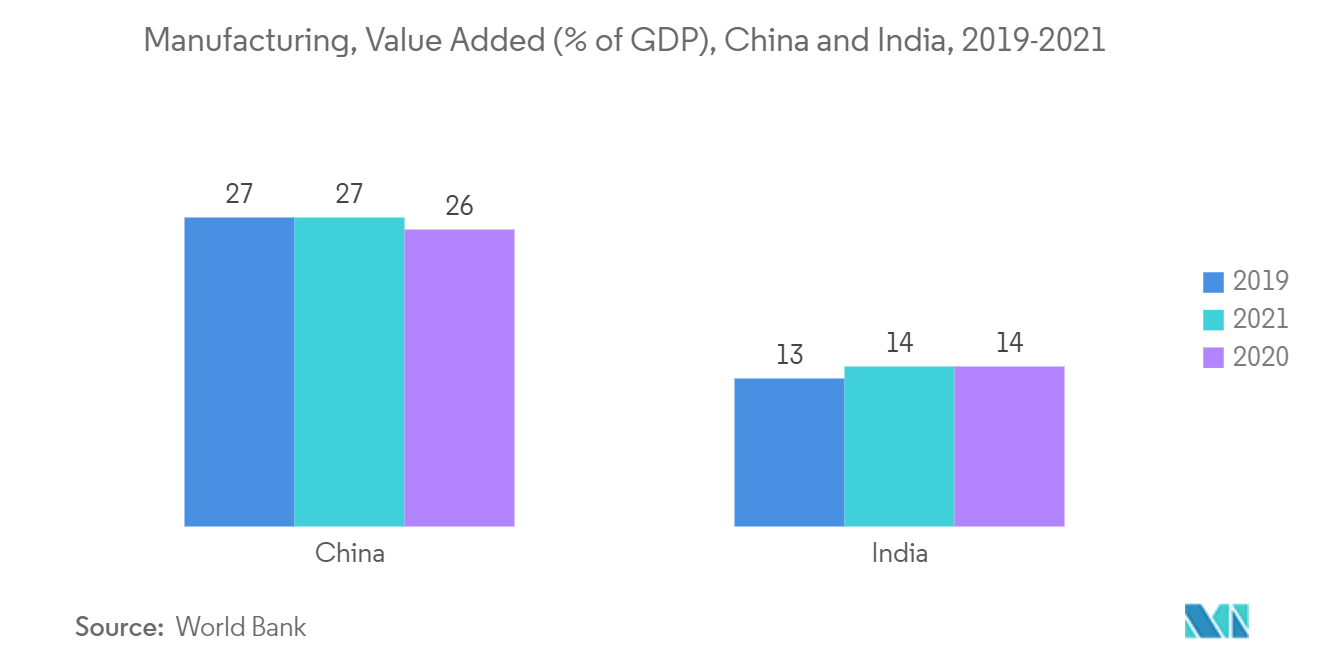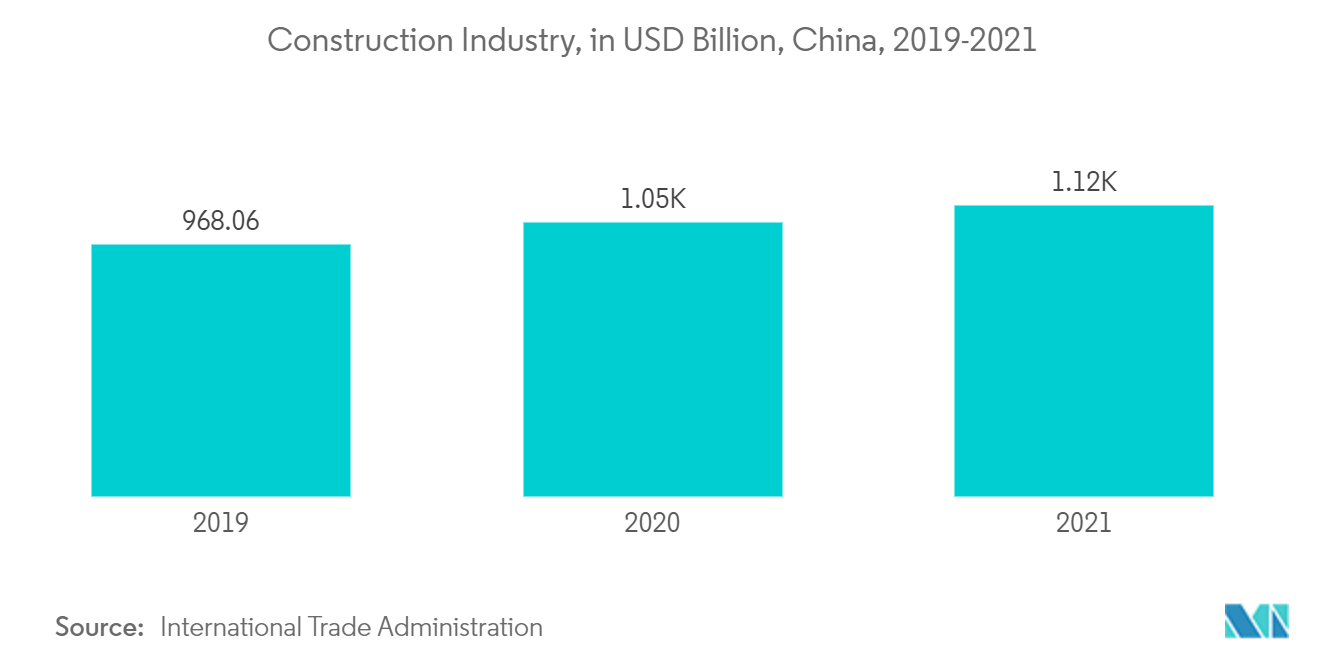Market Trends of Asia-Pacific Heating Equipment Industry
This section covers the major market trends shaping the APAC Heating Equipment Market according to our research experts:
Industrial is Expected to Grow at a Signficant Rate
- Heat pumps are used for industrial processes that require low-temperature heat. Commercially available heat pumps can provide heat up to 160°C. Typical industrial applications for heat pumps include drying, washing, and pasteurization. Industrial heat pumps are most often bespoke systems designed for specific process needs.
- These are essential in industrial heating solutions, supplied by either surplus heat, district heating from the industrial processes, or wind power. Re-using the process energy for hot water and space heating is an attractive shortcut to significant energy savings and a sustainable future, thus driving the market growth in industrial applications.
- Due to the growing demand for heat pumps in industrial applications, players are focusing on product development. For instance, recently, PHNIX, a manufacturer of heat pumps in China, launched a new HeatForce series Co2 heat-pump water-heating system for industrial and commercial applications, with the creative use of a new eco-friendly CO2 refrigerant. The unit can maintain a high coefficient of performance (COP) of up to 4.3 under the low-temperature condition of -7°C.
- Industry players are laying high emphasis on forming a strategic alliance, which may aid the companies in garnering higher market share and boost their presence across the country. Moreover, the government is rapidly heading toward green buildings, which may create new avenues for market players. According to ANAROCK, a property consultant, the green building market in India is expected to reach a value of about USD 35-30 Billion by 2022.
- In addition, rapidly increasing urbanization is another driving factor for adopting DH. For instance, in recent years, China rapidly increased its use of centralized systems in its northern regions. Japan is another major country in the Asia-Pacific region that is adopting district heating for parts residing in colder weather conditions.
- At present, Japan must respond to social issues, such as low carbonization, strengthening of cities and blocks, and revitalizing local economies. The country's heat supply business was liberalized by revising the Heat Supply Business Law in 2016. According to a low-carbon simulation calculation of CO2 emissions, it is possible to reduce the efficiency of equipment in Japan by 2030 by 43% or more compared to 2013 in the large city model and 46% or more in the local city model.

China is Expected to Register the Fastest Growth Rate
- Factors such as rising disposable income, growing concern for CO2 emission, and high consumption of heating and cooling systems are some of the major factors driving the studied market growth in China. According to the Organization for Economic Cooperation and Development (OECD) models, India and China may witness a seven-fold increase in income per capita by 2060.
- The governments in the Asia Pacific region are also collaborating with a local companies, further boosting the domestic market. For instance, the Beijing District Heating Group is one of the significant heating enterprises in China. The company also deployed its heating solutions for the central Beijing government and army, embassies in China, large enterprises and institutions, and the public and owns numerous projects in other provinces.
- In addition to having the greatest population, China also produces the most CO2. China is strongly motivated to transition to a more environmentally friendly energy system because of the country's significant CO2 emissions and air pollution problems. Today, coal accounts for most of the energy needed to heat buildings in China. The International Energy Agency (IEA) stated that China has the largest district heating system in the world, and more than 200 million Chinese citizens may potentially benefit greatly from green heating. Many Chinese cities desire to adopt CO2-saving projects but lack the practical understanding and favorable legal environment needed to operate green district heating to its full potential.
- In July 2021, based on this, the Danish Energy Agency and UNEP DTU Partnership agreed to collaborate more closely on district heating in China. The cooperation aims to accelerate the green transition and assist China in upholding its commitments under the Paris Agreement by sharing Danish expertise under regulatory framework conditions.
- Further, the growing construction sector in the country is bolstering the demand for the heating equipment market. The Ministry of Housing and Urban-Rural Development (MOHURD) published a notice for implementing Urban Renewal Actions in 2020 as part of China's 14th Five-Year Plan. The government wants to improve the standard of urban living in China. Therefore this urban regeneration initiative strives to create greener, more efficient cities.
- The capacity of China's construction sector has expanded, which has benefited the need for engineering services. Data from MOHURD indicates that in 2021, China generated USD26.5 billion in income from engineering consulting services such as engineering supervision and cost consultancy.

